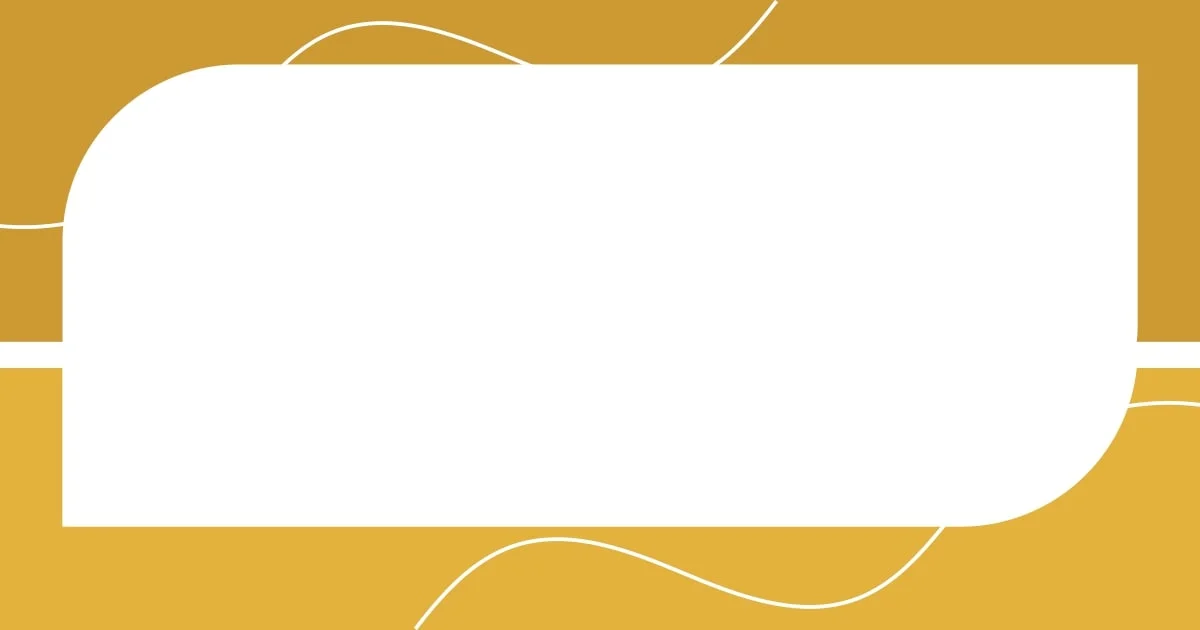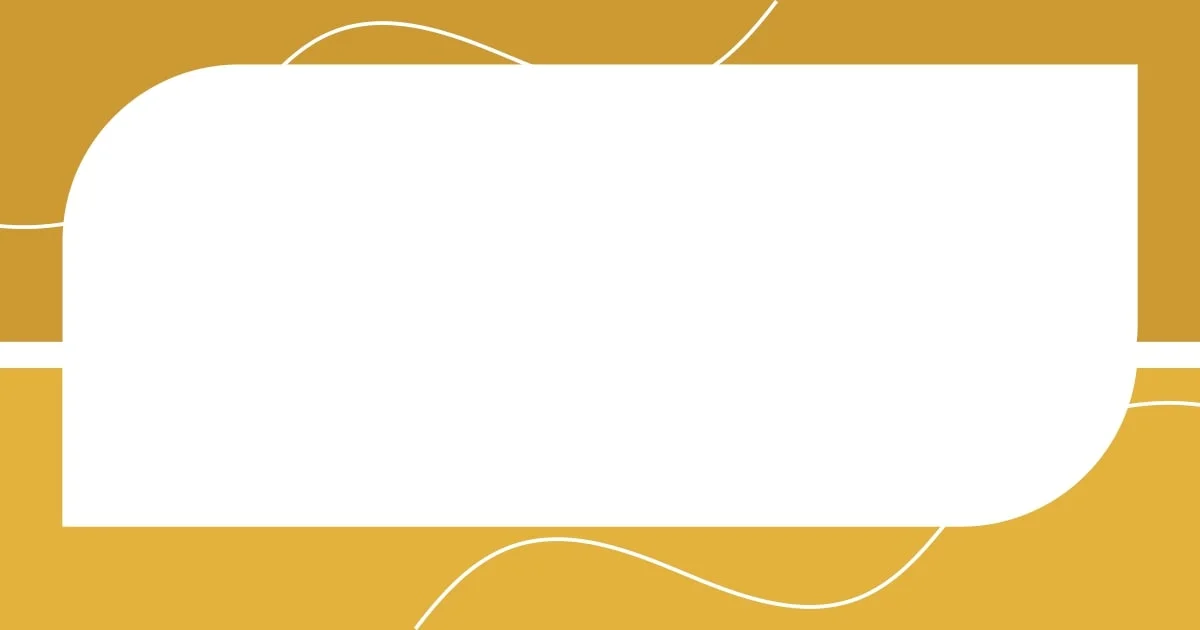Key takeaways:
- Understanding and acknowledging creative blocks is the first step towards overcoming them; external factors like stress and environment play a significant role.
- Identifying personal triggers, such as fatigue and emotional overload, can help creators develop effective strategies to maintain their creativity.
- Creating a supportive environment through uplifting relationships, a nurturing workspace, and community collaboration enhances creative flow and inspiration.

Understanding Creative Blocks
Creative blocks can feel incredibly isolating, almost like being stuck in a fog with no clear path forward. I remember sitting at my desk, staring at a blank page for hours, feeling a mix of frustration and despair. It’s as if the ideas that once flowed so easily have suddenly turned off, leaving me questioning my abilities.
Sometimes, I think about the pressure we place on ourselves as creators. Have you ever felt that overwhelming weight of expectation? I certainly have. This pressure often manifests as self-doubt, pushing away the very creativity we’re trying to harness. Moments like these taught me that it’s perfectly normal to hit a wall; acknowledging this can be the first step toward breaking through.
What’s interesting is how external factors can amplify these blocks. Stressful deadlines or a chaotic environment can stifle creativity in ways I hadn’t realized. I once found myself battling a creative drought during a particularly hectic project, and it made me reconsider my work habits and environment. Recognizing these triggers helped me develop strategies to regain my creative flow, transforming those challenging times into opportunities for growth.

Identifying Personal Triggers
Identifying personal triggers is an essential step in overcoming creative blocks. I’ve learned that specific situations or feelings often lead me to that frustrating standstill. For instance, I noticed that whenever I felt especially fatigued, my creative energy fizzled out. Recognizing that my physical state directly influences my creativity was a game-changer for me. Have you taken note of your own patterns?
Another area I explored was my emotional state. I realized that when I’m overwhelmed with personal issues, my brain simply refuses to cooperate. During a rough patch in my personal life, I struggled to write a single word. It made me reflect deeply on how intertwined our emotional health is with creative output. By paying attention to these emotional dips, I’ve learned to take breaks and recharge before diving back in.
I also discovered that my environment plays a crucial role in influencing my creativity. There were times when a cluttered space mirrored my mental state, leading me to feel even more stuck. One afternoon, I decided to declutter my workspace, and the shift was almost immediate. Suddenly, ideas started flowing again. This taught me that both mental and physical spaces can trigger creative flow or stagnation.
| Personal Trigger | Example |
|---|---|
| Fatigue | Feeling drained after a long day leads to a creative block. |
| Emotional Overload | Handling personal issues stops creativity in its tracks. |
| Cluttered Environment | A messy space creates a chaotic mental state. |

Techniques to Spark Creativity
When I find myself facing a creative block, I often turn to a few techniques that have proven effective for me. One method I love is changing my scenery. The simple act of stepping outside or relocating my workspace can dramatically shift my mindset. I recall one particularly dreary afternoon when I felt completely uninspired; a walk in the nearby park revitalized my thoughts and allowed new ideas to blossom. Nature has a way of sparking creativity that can be hard to capture in a confined space.
Another approach is to engage in activities unrelated to my main project. For instance, I often try doodling or journaling, which not only serves as a creative warm-up but also lets my mind wander freely. Here are some practical techniques I recommend to ignite your creativity:
- Shift your environment by working in a new location or even just rearranging your workspace.
- Take a stroll in nature to clear your mind and stimulate new ideas.
- Engage in unrelated creative activities, like painting, writing, or playing a musical instrument.
- Set a timer for a short period to brainstorm without judgment, allowing any idea to flow freely.
- Embrace mindfulness practices, such as meditation or deep breathing, to calm the mind and open up creative pathways.
Another effective technique I’ve discovered is tapping into my routine. I’ve found that sometimes, a simple ritual can help kickstart the creative juices. For instance, I developed a habit of brewing my favorite herbal tea before I sit down to write. The comforting aroma not only soothes my nerves but also cues my brain that it’s time to create. This small ritual has transformed my mindset, making the act of writing feel more special.
I also like to collaborate with others; discussing ideas with friends or fellow creators can open up avenues I never considered before. It’s fascinating how a conversation can lead to unexpected insights, reigniting my passion for a project. Here are a few more techniques that have helped me:
- Establish a pre-creative ritual, such as making tea or stretching, to signal it’s time to create.
- Collaborate with others for fresh perspectives and shared inspiration.
- Utilize creativity prompts or challenges to spur new ideas.
- Limit distractions by setting boundaries, such as designated creative time without technology.
- Reflect on past successes and remind yourself of your creative capabilities to build confidence.

Daily Habits to Enhance Flow
Developing daily habits that promote creative flow has truly changed the way I approach my work. For example, I’ve found that starting my day with a short meditation session helps to clear my mind. Just last week, after feeling overwhelmed with my to-do list, I took ten minutes to breathe deeply and focus on nothing but the present moment. It was like hitting a reset button. Does creating a calm mental space resonate with your daily routine?
Another habit I swear by is setting specific blocks of time for my creative work. With my background in project management, I’ve learned to compartmentalize my tasks. I designate two hours each morning purely for writing, free from distractions. When that timer goes off, I suddenly find myself in a state of flow, ideas bubbling up effortlessly. Have you ever noticed how structure can liberate your creativity rather than constrain it?
I also make it a point to step away from my screen every hour or so, giving my brain a much-needed break. During these moments, I stretch, hydrate, or even take a quick walk around the block. Recently, after implementing this habit, I had one of my best brainstorming sessions. I returned with fresh perspectives and a dash of energy that had been missing just moments before. This simple change showed me how crucial it is to listen to my body’s need for movement and rest. How do you recharge during your creative endeavors?

Seeking Inspiration from Others
Seeking inspiration from others can be a game-changer when creative blocks hit. I vividly remember a time when I felt completely stagnant in my writing. A friend suggested we attend a local art exhibit together. Something about being surrounded by creativity and discussing the art with her opened up my mind in ways I didn’t expect. It reminded me that inspiration often comes from engaging with the work of others.
I’ve also found that chatting with fellow creators about their projects can spark new ideas of my own. One afternoon, during a virtual coffee break, a colleague shared their struggles with an ambitious goal. As we talked, I realized how our distinct experiences intertwined. Listening to their journey not only provided me with insights for my own work but rekindled my enthusiasm. Have you ever experienced that rush of inspiration when discussing ideas with a peer?
Beyond conversations, I often turn to books, podcasts, and blogs in the creative realm. Recently, I listened to an interview with a renowned author who discussed their writing pitfalls. Their candidness about doubts matched my own feelings at times, creating a sense of connection. It taught me that everyone faces this struggle, and sharing those experiences can ignite the very creativity we sometimes feel we lack. So, who inspires you? Have you sought out their stories?

Reflecting on Past Successes
Reflecting on my past successes can be a powerful antidote to creative blocks. I often find myself revisiting a time when I completed a challenging project that seemed impossible at first. Looking back, I remember the sense of pride I felt upon finishing it, reminding me of my capabilities and resilience. Does recalling your victories help you regain your creative momentum too?
One particularly memorable experience was when I landed an article in a prominent magazine. At the time, I had countless doubts about whether my writing was good enough. Now, that success serves as a beacon during tougher times. I remind myself that I’ve tackled challenges before, and this gives me the confidence to push through the current block. Have you ever found strength in your past achievements?
Sometimes, I create a visual representation of my successes—a sort of success wall filled with clippings and testimonials. It’s not just about the accolades; it’s also about remembering the emotional journey behind each piece. Looking at that wall reminds me of the joy and fulfillment I felt during those moments. What tangible reminders do you keep that inspire you to keep creating?

Creating a Supportive Environment
Creating a supportive environment has profoundly shaped my creative journey. I recall a time when I transformed my workspace into a cozy haven, filled with plants, art, and soft lighting. The shift wasn’t just aesthetic; it was emotional. Being in a space that felt nurturing allowed me to breathe easier, paving the way for fresh thoughts. Have you ever felt how your surroundings can impact your creativity?
I’ve also learned the value of surrounding myself with encouraging individuals who uplift rather than critique harshly. One day, after sharing a piece I was working on with a close friend, she offered gentle feedback instead of criticism. Her support felt like a warm hug, restoring my confidence. That experience taught me how vital it is to seek out those who can remind us of our strengths when we doubt ourselves. How often do you find yourself surrounded by positive influences?
Moreover, I make an effort to establish routines that reinforce this supportive environment. For instance, I dedicate time each week to engage in collaborative sessions with fellow creatives. These gatherings feel like rejuvenating workshops, where ideas bounce off one another like sparks. The energy in those moments can be electric, serving as a reminder that creativity thrives in community. What activities have you engaged in that helped you cultivate such an environment?














